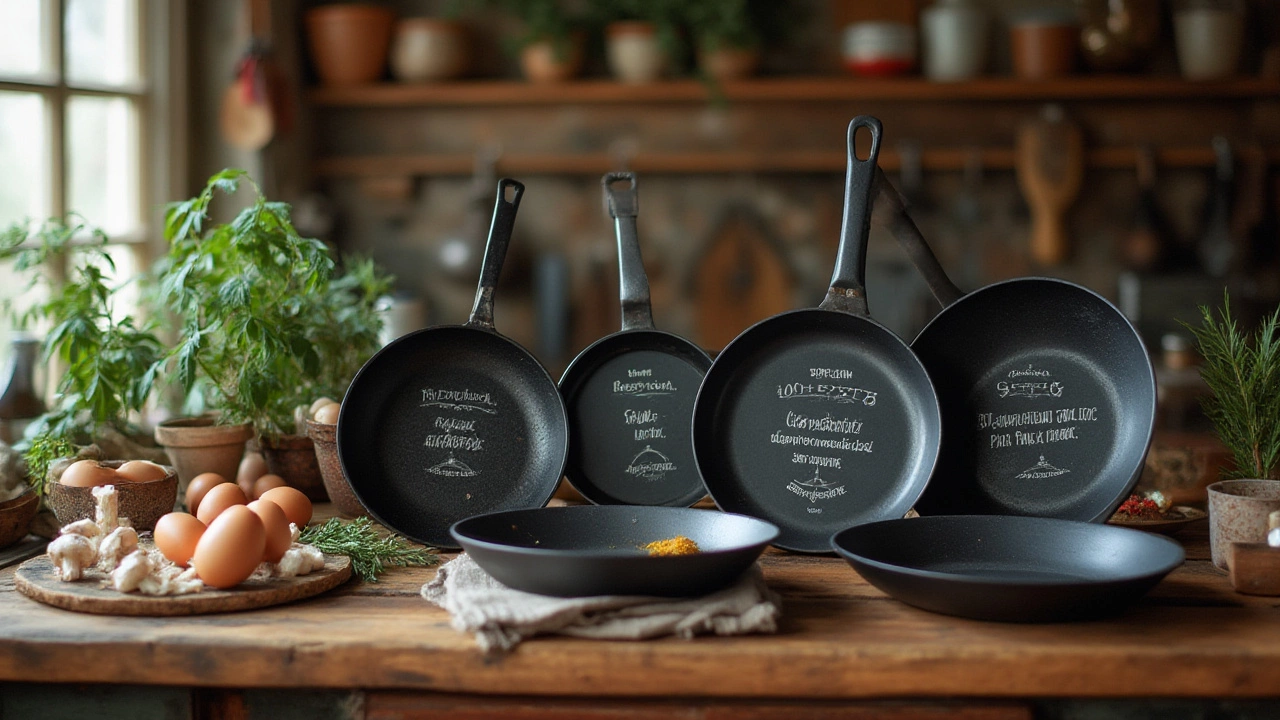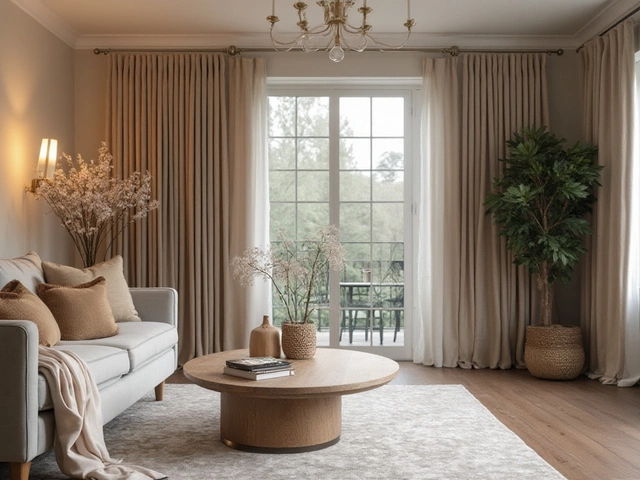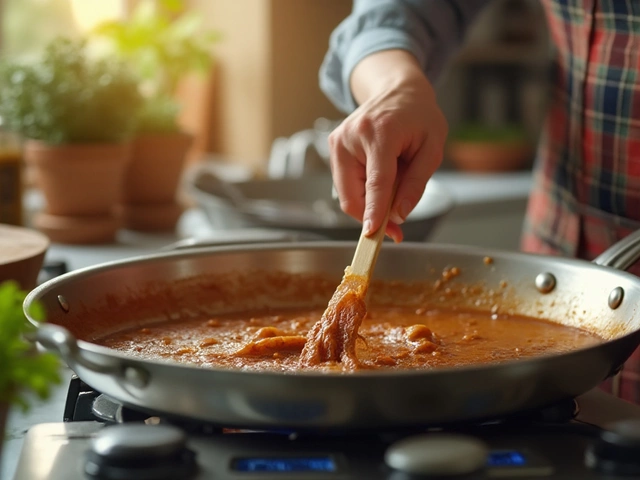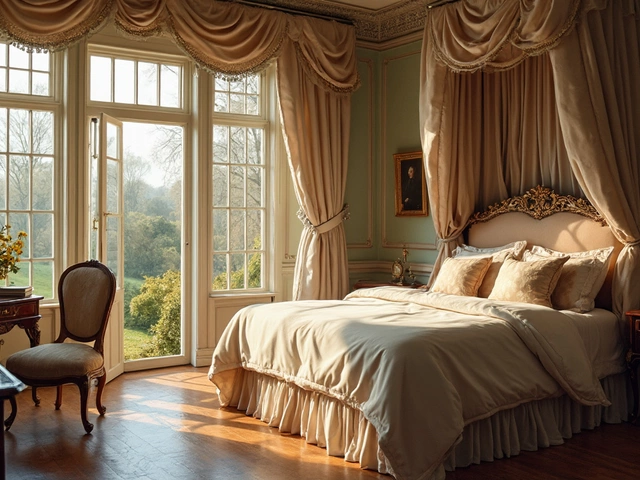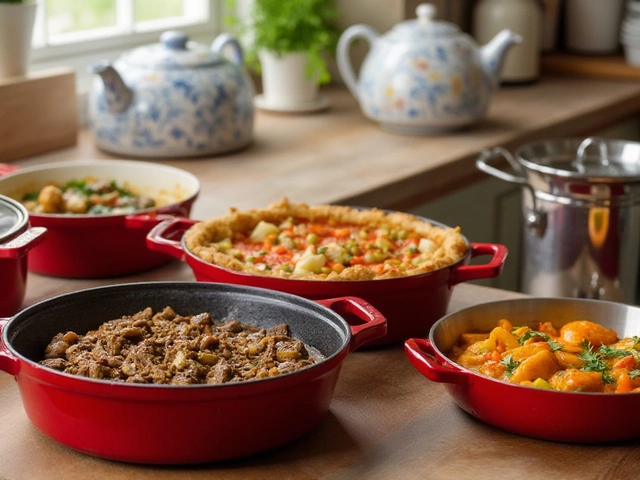Ever stared at a flat pan and thought, “Wait, what exactly am I supposed to call this thing?” You're not the only one. The world of kitchenware is an endless list of gadgets with overlapping names and confusing shapes. One simple tool can go by half a dozen names depending on where you’re standing, what you’re cooking, or even your grandma’s traditions. And flat pans? They have more than their fair share of name drama. Let’s settle this once and for all—because there’s nothing more annoying than reading a recipe that calls for a “flat pan” and realizing no one actually agrees on what that means.
The Many Faces (And Names) of the Flat Pan
Flat pans show up in kitchens everywhere, easily overlooked but absolutely crucial. The term “flat pan” isn't always the one you'll hear, though. Let’s break this wide open: in most English-speaking kitchens, what most people mean by “flat pan” usually falls into one of three main categories—skillets, frying pans, and griddles.
Let’s start with the skillet—a word Americans love to use, especially in the South and Midwest. A skillet is a broad, flat-bottomed pan, typically with low, flared sides. Some folks say “frying pan” or even “frypan” instead. Now, is there a difference? Technically, frying pans and skillets have similar shapes, but a skillet is often a little deeper. In Europe or the UK, you'll sometimes hear people call it a “frying pan” exclusively, and “skillet” might sound foreign or old-fashioned.
Then there's the griddle. Unlike skillets or frying pans, griddles offer a completely flat surface with almost no sides. Think pancakes, quesadillas, or the ideal grilled cheese: that’s a griddle’s territory. Most griddles are rectangular or square, often designed to fit over two burners. In diners and restaurant kitchens, the “flat-top” is often just a huge griddle. Travel to India and you’ll find the “tawa,” used for flatbreads like roti and dosa: flat, round, and with very low or even non-existent sides.
If you check out homegoods stores or online shops, the confusion only grows. Search for “flat pan” and you might get results for pizza pans, paella pans (which are also broad and flat, but with two handles and shallow depth), or even specialty items like crepe pans. And don’t forget: omelet pans or sauté pans can also be quite flat, though they usually have higher sides.
Cooking magazines, food blogs, and chefs tend to be precise, but home cooks and retailers get a little loosey-goosey with the vocabulary. Sometimes brand names add yet more variety—Cast Iron Skillet (like that iconic Lodge model), Nonstick Fry Pan, Stainless Steel Griddle, Electric Griddle—the adjectives multiply endlessly.
This is all to say: the word “flat pan” is more of a description than an official kitchen term. There isn’t a single tool in the kitchen aisle labeled simply “flat pan.” If you’re poking around for this staple, look for “frying pan,” “skillet” (especially if you want cast iron), or “griddle.” Sometimes it just depends on what you’re hoping to cook. Pancakes? Go for a griddle. Eggs? Either a skillet or a nonstick fry pan. Paella? That’s a flat paella pan. French crepes? Try a flat crepe pan.
Throughout history, these pans have made the leap from open-fire cuisine (cast iron over coals) to the latest induction cooktops. People have been using flat, wide pans for food for centuries: ancient Romans cooked on metal griddles, and Asian cuisines have their own flat-pans like Chinese chuan or Thai kanom krok pans (for street food snacks). Every region seems to have its version, shaped by local food habits and material availability.
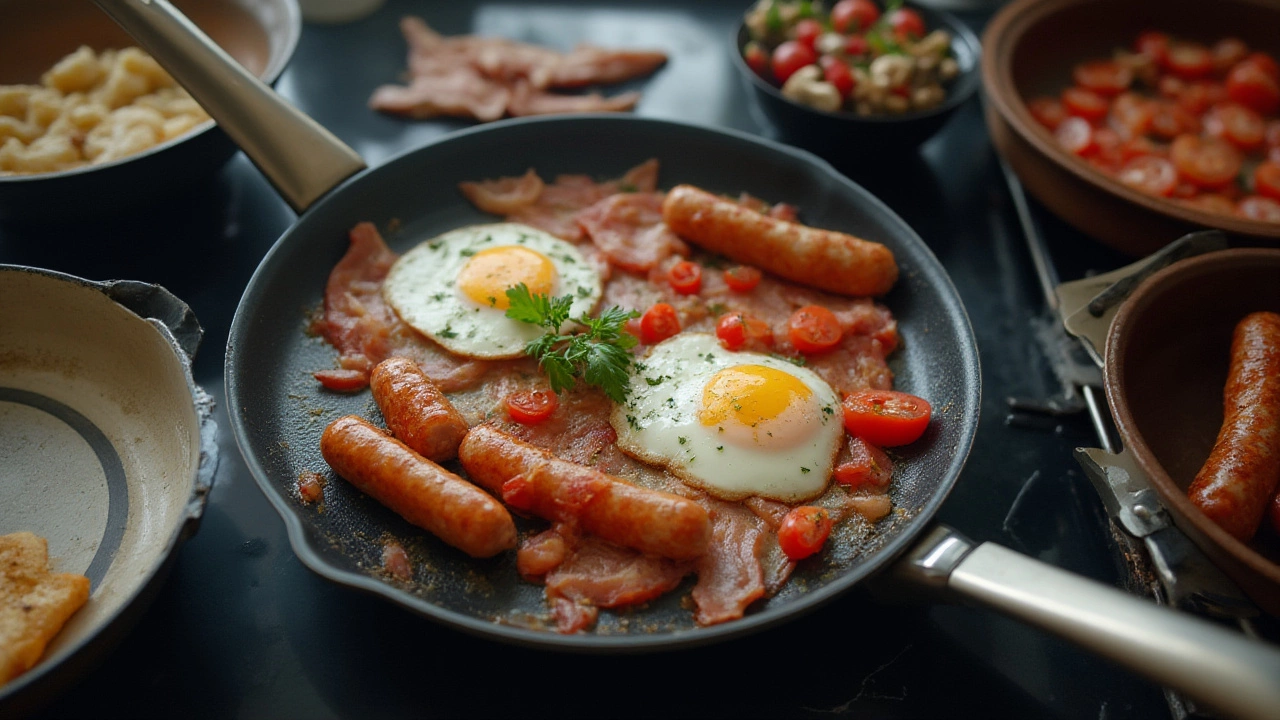
How Flat Pans Are Used: Features, Materials, and Best Practices
Now that the mystery is slightly less mysterious, here’s what makes flat pans so useful—and what makes them different from each other. Start with the basics: surface area. A good flat pan gives you plenty of space to cook multiple ingredients at once. That “sizzle zone” is mostly what you want for fast-cooking foods—think bacon, eggs, pancakes, searing meats, or stir-frying veggies. The broad, low side design is perfect for turning food with a spatula, monitoring doneness, and adding ingredients on the fly.
Materials make a massive difference. Cast iron skillets are darlings for their heat retention, non-stick seasoning (if you care for them right), and sheer versatility. Cast iron does need a bit more muscle: these pans are heavy and must be dried and oiled to prevent rust. Nonstick pans make cooking eggs and delicate fish a breeze, but they don’t last forever—most experts say two to five years is their best run, depending on how gentle you are and how hot you like to cook.
Stainless steel pans are great for browning and searing, but you’ve got to know the trick: preheat first, then add oil. Otherwise, food sticks, and you end up swearing and scrubbing. Griddles, whether electric or stovetop, are usually made of cast iron, aluminum with nonstick coating, or steel. If you love making breakfast for a crowd, an electric griddle might just change your weekends: you can flip a dozen pancakes before anyone even starts complaining about hunger.
Here’s a helpful fact: in a 2024 Cook’s Illustrated kitchenware testing project, cast iron won as the best all-around skillet for even cooking and unbeatable durability. If you care for it, a single cast-iron pan can last generations. That said, a nonstick pan averaged the top slot for easiest cleanup and quick breakfasts on busy days.
If you’re picking a flat pan, consider handle shape (stay-cool, oven-safe, or wood vs. metal), the weight (heavier means better heat retention, but harder on your wrists), and size. For solo cooks, an 8-inch skillet is usually enough. For big family meals, grab something at least 12 inches across.
Seasoning cast iron means adding a layer of oil and baking it onto the surface; this keeps the pan nonstick and rust-free. Many brands sell “pre-seasoned” cast iron, but after a few months of home use, you’ll probably want to repeat the process yourself. For nonstick, stick to silicone or wood tools, wash gently, and never use cooking spray (it leaves behind a stubborn film). Stainless and griddles can usually face metal tools without worry.
Flat pans excel at:
- Crispy bacon and perfect eggs
- Pancakes, crepes, and tortillas
- Browning proteins evenly
- Stir-frying or sautéing veggies
- Toasting bread or buns
- Making full English breakfasts or large hashbrowns
With all these jobs, it makes sense why every tradition worldwide has its go-to flat cooking surface.
If you want a flat pan that lasts, check the base: heavy-gauge metal, multi-layered construction (for stainless/aluminum combos), and even weight distribution mean less warping and better results. Pay attention to oven safety if you want to finish dishes under the broiler—plastic or rubber handles might not survive.
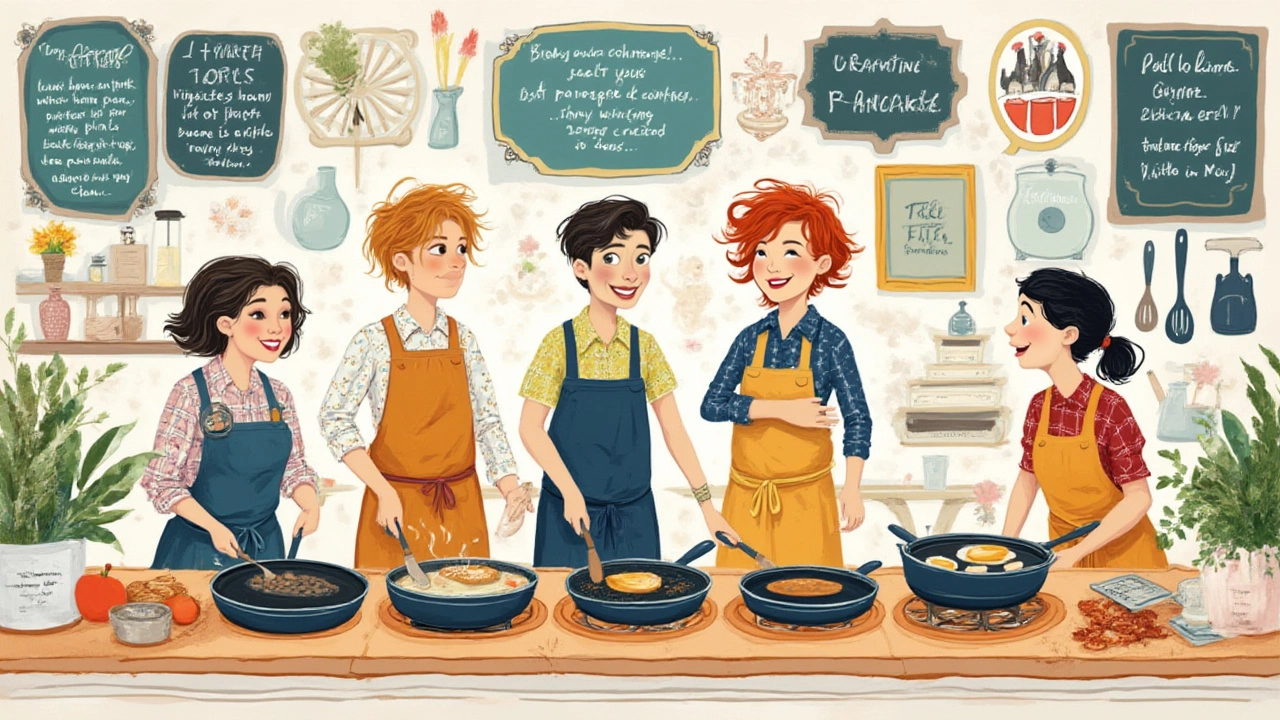
Flat Pan FAQ: Names, Uses, Maintenance, and Handy Stats
Still have questions? You’re not alone. Here’s a quick run-down of the info that gets people most twisted up about flat pans, plus some nerdy—but useful—numbers you can drop in your next kitchen conversation:
- What’s the difference between a skillet and a frying pan?
Mostly shape: both are flat, but a skillet may be deeper with slightly sloped sides; frying pans tend to be shallower. In day-to-day life, most people use these labels interchangeably.
- Is a griddle just a massive fry pan?
Sort of—the difference is the sides (a griddle usually has none or just the tiniest lip) and that a griddle is often rectangular for more cooking surface. If it fits over two burners, you’re looking at a true griddle.
- Can I use a flat pan in the oven?
Yes, if the handle is oven-safe. Cast iron, stainless, and some aluminum pans go right into the oven—perfect for finishing dishes or baking.
- Which is best—nonstick, cast-iron, stainless?
Depends! Nonstick for eggs and delicate foods. Cast iron for heat and durability. Stainless for browning meat. Most cooks end up with at least one of each over time.
- How long do these pans really last?
Nonstick: 2-5 years (unless scratched early). Cast iron: literal decades—even a century. Stainless: decades if you don’t warp them with too-high heat.
Surprise fact: According to a 2024 Good Housekeeping report, nearly 60% of US households own more than three different flat pans or griddles.
Some useful numbers about pan sizes and weights, just to nail down the basics:
| Type | Common Size (inches) | Average Weight (lbs) | Main Use |
|---|---|---|---|
| Nonstick Skillet | 8" – 12" | 1 – 2.5 | Eggs, pancakes |
| Cast Iron Skillet | 10" – 12" | 4 – 8 | Browning, roasting |
| Griddle | 10" – 20" | 5 – 10 | Pancakes, bacon |
| Crepe Pan | 10" – 12" | 2 – 3 | Crepes, tortillas |
| Paella Pan | 12" – 17" | 2 – 4 | Paella, large dishes |
One more tip: if you’re shopping for a new flat pan, try picking one up in person, if possible. The grip, the heft, and the balance tell you more than any online spec list ever could. Handles wobble on cheaper models (not what you want when wielding hot oil), and lighter pans tend to heat up too unevenly for good results.
Remember, there’s no “one true” flat pan for every job. Most recipes calling for a flat pan mean a frying pan or skillet, but a griddle or crepe pan isn’t out of the question if the food fits the bill. Above all: pick the style and material that fits your cooking style—not just the label. In your kitchen, you’re the one naming the tools, anyway.

